First Aid Kit Essential Guide: A New Year Checklist for Australian Standards

As we ease back into our routines after the holiday season – whether it’s returning to work, school, or simply getting back to our everyday activities – it’s easy to overlook some of the most important things we rely on for safety and well-being. One of those essentials is your first aid kit.
Now is the perfect time to take a moment to ensure that your first aid kit is fully stocked, compliant with standards, and ready for the year ahead. Whether you’re at home, at the office, or on the go, having a well-prepared and properly maintained first aid kit can make all the difference in an emergency. This helps go some way to ensuring your workplace is meeting the Code of Practice for first aid in the workplace.
It’s also important to be familiar with the items in your first aid kit and what products to use for different injuries. St John has a range of first aid kits available that will fulfill everyone’s requirements – whether you are camping in the bushes, traveling overseas, driving to work on a weekday, or riding your bike on a weekend, we got you covered.
Why Regularly Checking Your First Aid Kit is Important

Over time, supplies in your first aid kit may expire, get used up, or become damaged. It's important to regularly check and refresh your first aid kit to ensure it’s up to date, compliant, and ready for use when you need it most. All workplaces, leisure centres, homes and cars should have a first aid kit depending on your size and risk level.

Find Out How Many First Aid Kits Your Workplace Really Needs
WorkSafe Victoria, via their first aid in the workplace compliance code, provide guidelines on the minimum number of kits based on the risk profile and number of people in the workplace (including students, patrons or visitors). Even micro businesses with just one employee are required to have at least 1 kit available. As a guide, the chart below is a starting point in your assessment.
Some other variables to consider include shift times, locations, vehicles (every car, van or truck must have a first aid kit), types of chemicals present and even whether manufacturing takes place. You may then need additional specialised modules in the workplace, such as eye or burns modules if employees could be exposed to corrosive chemicals, flying particles or flammable liquids.
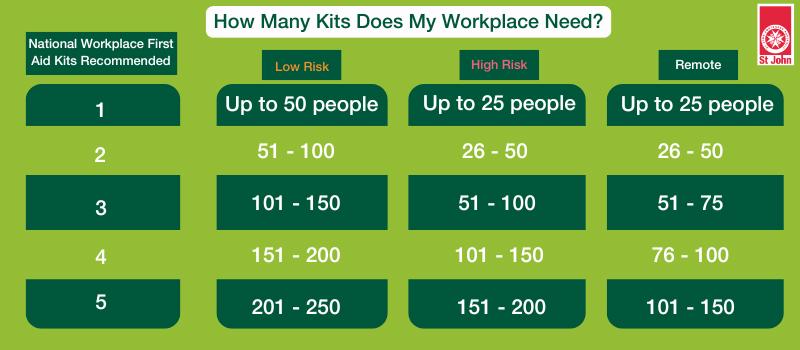
What to Include in Your First Aid Kit
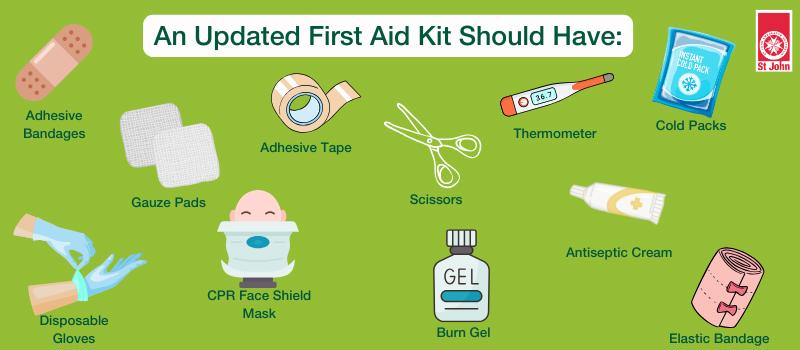
According to Australian Standard AS 2675, a basic first aid kit for use by consumers should include the following essentials. These items are designed to help you respond to common injuries and illnesses. Be sure your kit contains the following items:
-
Adhesive Bandages (Plasters)

- Various sizes for treating minor cuts, abrasions, and blisters.
- Make sure you have a variety of shapes and sizes to cover different wounds.
-
Antiseptic Cream or Wipes
- For cleaning and disinfecting wounds before dressing them.
- Helps prevent infection in minor cuts, scratches, or burns.
-
Sterile Gauze Pads
- Essential for covering larger wounds to absorb blood and prevent infection.
- Sterile gauze pads are a must for any first aid kit.
-
Adhesive Tape
- Used to secure gauze pads, dressings, or bandages to wounds.
- Ensure you have a good-quality tape that sticks and is easy to remove.
-
Elastic Bandage (Crepe Bandage)
- Ideal for wrapping sprains or strains and can be used to support joints.
- The bandage should be versatile and of a size that fits different body parts.
-
Disposable Gloves
- Important for protecting yourself and others when administering first aid.
- Ensure your gloves are latex-free if you or others have a latex allergy.
-
Scissors
- For cutting bandages, tapes, or clothing in an emergency situation.
- Opt for rounded-tip scissors for safety.
-
Thermometer
- A digital thermometer is a must-have for quickly checking a person’s temperature.
- Fever can be a sign of an infection or other medical condition.
-
CPR Face Shield or Mask
- A barrier device used during cardiopulmonary resuscitation (CPR) to protect both the rescuer and the victim.
- Make sure it's included, especially if you are in a workplace or school setting.
-
Burn Gel or Burn Dressing
- Used for treating minor burns, cooling the area, and reducing pain.
- Always check for expiry dates on burn treatments, as they can lose their effectiveness.
-
Instant Cold Packs
- Helpful for reducing swelling or relieving pain from injuries like sprains or strains.
- Cold packs should be easy to activate and store in your kit.
-
Saline
- Used for cleaning wounds and flushing out debris to help prevent infection.
- Can be used to rinse the eyes in case of irritation from dust, chemicals, or other contaminants.
-
Alcohol Swabs
- Ideal for disinfecting the skin before administering first aid, such as cleaning around a wound or before applying a bandage.
- Useful for sanitising hands or small medical instruments when soap and water are unavailable.
-
First Aid Manual
- A simple guide to common first aid procedures can be invaluable in an emergency.
- Ensure the manual is up to date with the latest first aid practices.
Additional Items for Specific Needs
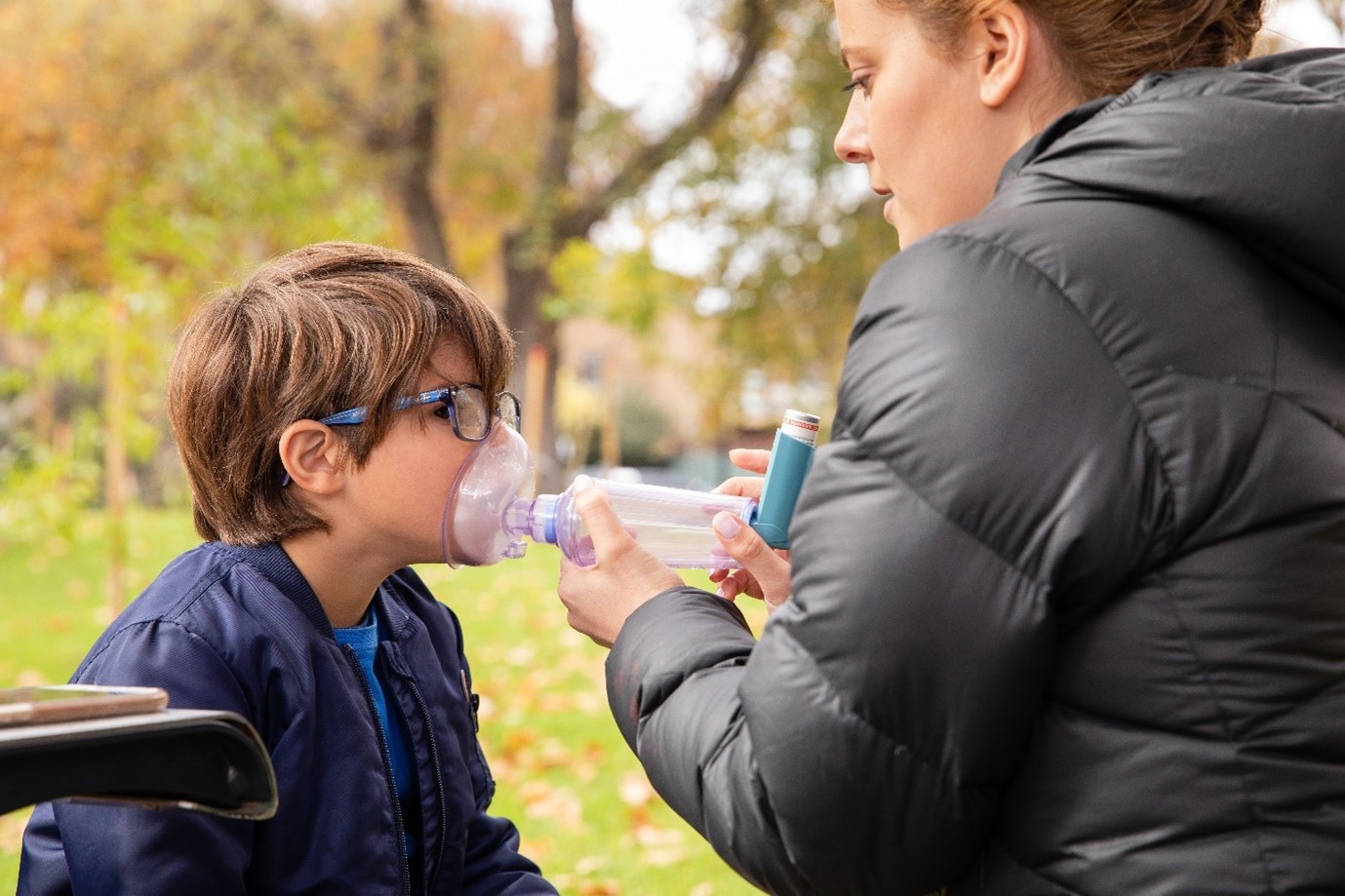
Depending on your environment or personal circumstances, you may need additional items. For example:
- Snake bite bandages for those in rural areas or environments where venomous snakes are a risk. To make like easier, St John Ambulance provides a Snake Bite First Aid Kit containing all the products you will need in an emergency, ready to go
- Eye wash solution if you work in environments with chemicals or irritants
Regular Maintenance is Key
A well-maintained first aid kit doesn’t only involve having the right items but also ensuring that everything is in working order. Here are a few quick maintenance tips:
- Check Expiry Dates: Go through your kit regularly to check the expiry dates of all medications, dressings, and ointments.
- Restock Used Items: If you’ve used any supplies, make sure to replace them right away so your kit is always fully stocked.
- Keep It Accessible: Store your first aid kit in a visible and easy-to-reach location, ensuring that everyone knows where it is and how to use it.
- Review First Aid Skills: Refresh your first aid knowledge periodically by taking a first aid course. Knowing how to use the items in your kit effectively can save lives.
OH&S legislation requires workplaces ensure an appropriate number of kits are provided and remain adequately stocked. There is a Model Code of Practice that should be followed by all workplaces. However, many find it daunting to know what items to replace, with how many replacements and when. St John makes it easy for you to keep your First Aid kits stocked and compliant with current workplace guidelines through our expert team of First Aid Kit Servicing agents, now also available when you bring your kit to us, and we restock it on the spot.
Ready for the Year Ahead
Now that we’ve entered a new year, make sure your first aid kit is ready to handle whatever the next 12 months may bring. A well-prepared first aid kit is literally your lifesaver in an emergency, so it’s essential that it meets the necessary standards and is stocked with the right supplies.
By regularly checking and maintaining your first aid kit, you’ll ensure that you’re prepared to respond quickly and confidently to any health or safety issues that arise – whether at home, school, or work.
Stay safe, stay prepared, and make sure your first aid kit is always ready for action!
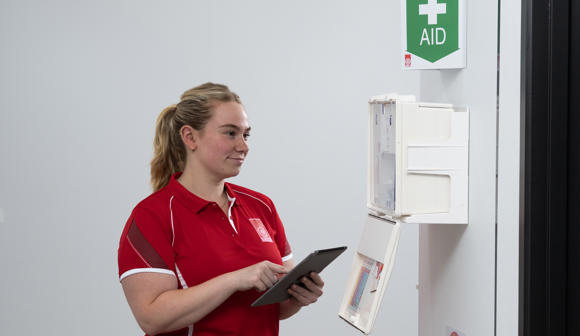
How to do First Aid Kit Servicing
It is critical that your workplace is fully equipped, prepared and ready to respond to a First Aid event at all times.

How to Choose the Best First Aid Kit
We know the world of First Aid Kits can be a little daunting if you’re unfamiliar with what’s available.
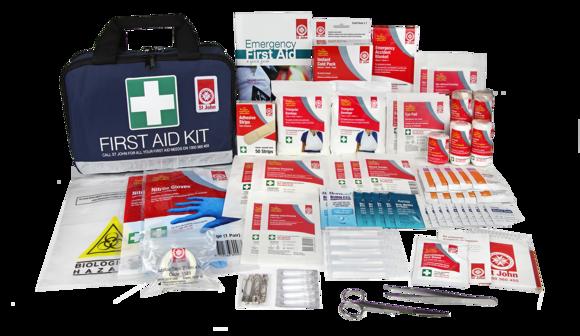
A Guide to First Aid Contents
Most of us have a First Aid Kit somewhere, whether at home or work. It’s our ‘insurance policy’ against disaster and provides most of what you could need in an emergency situation.
